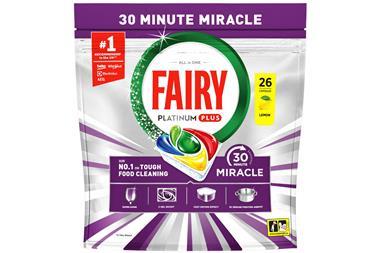The OFT is minded to refer the market for the supply of groceries by retailers in the UK to the Competition Commission (CC) for a market investigation.
Our decision takes into account new evidence that we have collected on market developments and features of the market that might prevent, restrict or distort competition and harm consumers.
This evidence suggests that the grocery market is evolving rapidly. The four largest supermarkets (Asda, Morrisons, Sainsbury's and Tesco) have consolidated their share of total food retailing since 2000, and supermarkets (particularly Tesco and Sainsbury's) have moved into the convenience store sector, competing directly with smaller chains and independent stores.
The size of the convenience retailing sector has grown overall (by value), partly driven by changes in consumers' shopping patterns. Entry to the sector by some supermarkets has contributed to this growth, but symbol groups (e.g. Spar, Costcutter) have also gained market share. The total number of convenience stores has fallen slightly over the last five years, and within this the number of independent stores has continued to fall, although sales per store have risen.
Overall, we believe that consumers have benefited from competition between the supermarkets and their expansion into the convenience store sector, through falling prices, and an apparent increase in choice and improving quality. However, in some locations consumers have a more limited choice of outlets, and concerns have also been raised over the impact of the decline of independent retailers on the overall choice and range available in the convenience retailing sector.
We have identified a number of features of the market that, when considered against the context of increased consolidation and the move of the supermarkets into the convenience store sector, could be reasonably suspected to distort competition and, in the case of some of the features, harm consumers.
- The planning system creates barriers to entry, primarily for new large format stores. There are reasonable grounds to suspect that, as a result, the big supermarkets are able to use land holdings to reinforce their market position. We have found evidence of significant land banks and the use of restrictive covenants on sites sold by the big supermarkets.
- There is evidence to suggest that the buyer power of the big supermarkets has increased since 2000, with some evidence that the differential between prices to large supermarkets compared with those to wholesalers and buying groups has risen. Against the background of greater concentration within the market, there may be grounds to suspect that this buyer power could harm consumer choice by undermining the viability of alternative business models including wholesale distribution to the convenience store sector.
- Aspects of the supermarkets pricing behaviour - below-cost selling and price flexing - provide reasonable grounds for suspecting that competition is being distorted, but we cannot conclude, on the basis of the evidence we have collected, that consumers are harmed.
- Developments in the convenience store sector such as the entry of some of the big supermarkets, both by acquisition and new entry, and the growth of symbol groups appear to have contributed to lower prices to consumers but this may have been at the expense of choice of store at a local level.
In view of the size and importance of the market and the breadth of concerns that have been raised, we believe that a market investigation by the CC would be the most appropriate way of resolving the above issues and, if necessary, imposing remedies.
Our decision takes into account new evidence that we have collected on market developments and features of the market that might prevent, restrict or distort competition and harm consumers.
This evidence suggests that the grocery market is evolving rapidly. The four largest supermarkets (Asda, Morrisons, Sainsbury's and Tesco) have consolidated their share of total food retailing since 2000, and supermarkets (particularly Tesco and Sainsbury's) have moved into the convenience store sector, competing directly with smaller chains and independent stores.
The size of the convenience retailing sector has grown overall (by value), partly driven by changes in consumers' shopping patterns. Entry to the sector by some supermarkets has contributed to this growth, but symbol groups (e.g. Spar, Costcutter) have also gained market share. The total number of convenience stores has fallen slightly over the last five years, and within this the number of independent stores has continued to fall, although sales per store have risen.
Overall, we believe that consumers have benefited from competition between the supermarkets and their expansion into the convenience store sector, through falling prices, and an apparent increase in choice and improving quality. However, in some locations consumers have a more limited choice of outlets, and concerns have also been raised over the impact of the decline of independent retailers on the overall choice and range available in the convenience retailing sector.
We have identified a number of features of the market that, when considered against the context of increased consolidation and the move of the supermarkets into the convenience store sector, could be reasonably suspected to distort competition and, in the case of some of the features, harm consumers.
- The planning system creates barriers to entry, primarily for new large format stores. There are reasonable grounds to suspect that, as a result, the big supermarkets are able to use land holdings to reinforce their market position. We have found evidence of significant land banks and the use of restrictive covenants on sites sold by the big supermarkets.
- There is evidence to suggest that the buyer power of the big supermarkets has increased since 2000, with some evidence that the differential between prices to large supermarkets compared with those to wholesalers and buying groups has risen. Against the background of greater concentration within the market, there may be grounds to suspect that this buyer power could harm consumer choice by undermining the viability of alternative business models including wholesale distribution to the convenience store sector.
- Aspects of the supermarkets pricing behaviour - below-cost selling and price flexing - provide reasonable grounds for suspecting that competition is being distorted, but we cannot conclude, on the basis of the evidence we have collected, that consumers are harmed.
- Developments in the convenience store sector such as the entry of some of the big supermarkets, both by acquisition and new entry, and the growth of symbol groups appear to have contributed to lower prices to consumers but this may have been at the expense of choice of store at a local level.
In view of the size and importance of the market and the breadth of concerns that have been raised, we believe that a market investigation by the CC would be the most appropriate way of resolving the above issues and, if necessary, imposing remedies.

















No comments yet